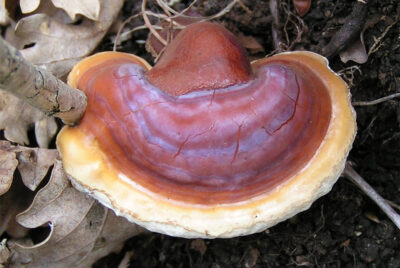When you are eating mushrooms do you think about brain health? I doubt it :) But…
Foraging for Mushrooms

The How To of Foraging for Mushrooms
Mushrooms are delicious. They make a welcome addition to a wide variety of dishes and add a unique taste. However, there is more to mushrooms than purchasing them from the grocery store. It is very possible to forage for your own mushrooms out in the wild. Depending on where you live, there could be a wide variety of mushrooms to find.
If you decide to attempt foraging, be prepared to work hard and learn a lot. It will take time and energy to tell the difference between the different types of mushrooms, where to look and how to spot them. But if you put the time in, the reward will be well worth it.
The Talents Of A Mushroom Hunter
All experienced mushroom hunters know what they are looking for and have the persistence and patience to keep trying. It is important to understand what you need to find. Part of this is to know the environment you belong to. There will be different mushrooms found in humid versus colder weather for example. Attempting to find a mushroom that doesn’t grow in the area you live will lead only to frustration.
For example, morel mushrooms only grow on or nearby dead trees in the spring. They prefer colder temperatures, so they won’t be found in hot regions. When you know that you are in the right place at the right time of year, patience is key. Don’t give into frustration. It may take a couple trips to find what you are looking for.
Don’t ever rush through mushroom hunting. There are many types of poisonous mushrooms that can easily be mistaken for other, edible kinds. Morel mushrooms are hollow when cut into, while False-morels are not. They look very similar, yet one is highly poisonous. Another type is a Chanterelle mushroom. They do not grow in clusters, while their lookalike – Jack O’ Lantern mushrooms do.
Experienced mushroom hunters are talented because of their knowledge and patience. Develop those skills and success will follow.
Dangerous Mushrooms
While there are thousands of poisonous mushrooms, they shouldn’t be a deterrent from mushroom foraging. By only foraging for the mushrooms you know for certain are safe to consume, you will be just fine. If you do accidentally eat a poisonous mushroom, it is important not to panic. Many poisonous mushrooms have a nasty, bitter taste and can be identified that way. Spit out the mushroom right away and rinse out your mouth with water or any other liquid you have at hand. After all the mushroom is washed out of your mouth, it is important to contact poison control and follow their instructions.
Sadly, not all poisonous mushrooms have that bitter taste. That is why sticking to what you know is safe is such an important part of mushroom foraging.
Death Caps are one of the most famous poisonous mushrooms and are both common and dangerous. Consuming only half a cap of the Death Cap can result in severe, irreversible damage to the liver. The Death Cap has a thin, white stalk and a round silver cap. They grow anywhere, from the woods to cities and should be avoided.
The Destroying Angel mushroom is even more deadly than the Death Cap. Within hours of consuming this mushroom, potentially lethal damage to the kidneys and liver is possible. If you consume this mushroom, go to the hospital right away to receive treatment. The Destroying Angel mushroom is all white and has thin stalks. They can be found in the United States and Europe, coming in a few different varieties.
Edible Mushrooms
Don’t be put off by the number of dangerous mushrooms. There are plenty of edible and delicious mushrooms to be found. Some of the most popular ones include Truffles, Portabellas, White Buttons, Morels and Creminis. White Buttons, Portabellas and Creminis are the same type of mushroom, but are at different stages of growth. Due to their difficulty to locate, truffles can be worth a good amount of money if you decide to sell, rather than eat them.
In Conclusion
Foraging for mushrooms is challenging, but a great way to find delicious additions to your meals. Just make sure to do research about your area and bring a book to identify mushrooms with you. Knowing what to expect will make the mushroom hunting experience both safer and more entertaining.



